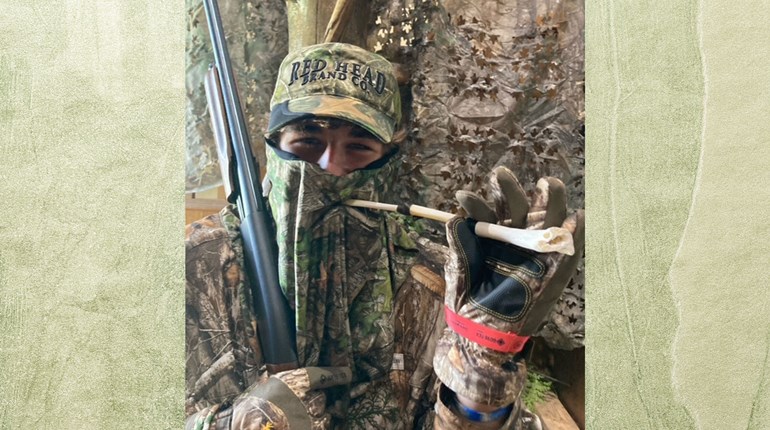
When things don’t work out at dawn or if you can’t make it to the woods until midday, knowing a bird’s daily routine will help you plan an attack at any hour—right up until last light.
5:45 a.m.—On the Roost
Scouting should tell you where a gobbler spends his night, but resist the urge to take a seat under his tree. Instead, use his gobbles as a way to confirm your previous reconnaissance and set up near his landing zone—or even farther away if you know the route he will take once he hits the ground.
6:35 a.m.—Flydown
A longbeard will likely pitch down into a relatively open area within 100 yards of his tree, so settle in under the cover of complete darkness and be quiet. If you can place a hen decoy without getting busted, it will sweeten the setup. Calls should be soft and minimal; the gobbler will locate you after your first one or two yelps. This is a good time to kill a pressured tom or one with lots of hens—if you’re stealthy.
7:15 a.m.—Showtime
As soon as he hits the ground, a gobbler’s going to want to show his stuff. He’ll move a short distance after flydown to a predetermined strutting area, a habit that has been the death of many longbeards. Set up on the edge of a clearing or field, a hardwood flat, a logging road—someplace a bird can see and be seen. This is where the ol’ boy goes to meet the ladies, so give him a reason to show up to the dance. Combine a couple hen decoys and maybe a jake with your best imitations of excited turkey talk.
9:10 a.m.—Breeding
A tom will remain with hens for as long as they show interest in him, and he’ll follow the ladies until they leave to nest. If you’re late to the woods, set up in an area where sign shows hens have been feeding and wait for them. Make contented clucks and purrs every 10-20 minutes to attract them and the gobbler in tow.
11:05 a.m.—Looking for Love
When his hens go to nest, a tom gets lonely. He’ll look for others, and any potential strutting area near a food or water source is a good place to spend the late morning and early afternoon hours. Now’s the time to call loudly, but be ready for a bird to sneak in silently. The afternoon is also prime run-and-gun time; plan your route to include areas where a gobbler could feed or water.
6:55 p.m.—Back to Bed
If the weather stays stable and he’s not spooked, a longbeard will likely return to the same area to roost. Be there waiting for him. Call to let him know the hens are ready for bed, but don’t expect him to gobble. He could show up unannounced at any time.





































